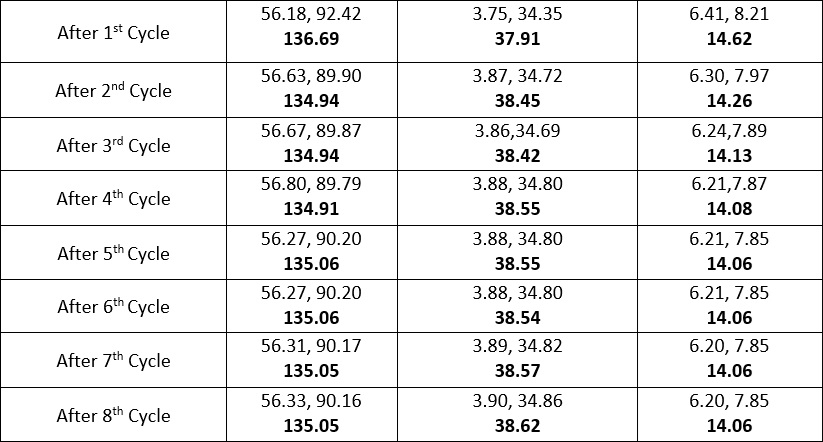Comparative Study of Systematization Procedures Applied to K-level Electron Binding Energies in X-ray Spectra

DOI:
https://doi.org/10.54060/a2zjournals.jase.76Keywords:
Mosley Plot, Parabolic Shape, Iterative Procedure, Systematization, Energy LevelsAbstract
X-ray and photoelectron spectroscopic studies have led to the measurement of accurate K level binding energy values in atoms. Since these experiments are conducted at various laboratories all over the globe using different instruments, there is every possibility that the results deviate from reality more than the probable errors. Consequently when these energy values are used for some other applications, their results obtained will be different from what is being expected. Therefore these energy values need to be systematized and corrected for errors if any. Various systematization procedures available in X-rays spectroscopy are (i) Mosley Law (ii) Modified Mosley Plot (iii) Hagstrom doubly modified Mosley plot (iv) Iterative self-consistent doubly modified Mosley plot. A detailed comparative study of all these systematization procedures is performed as applied to the K level binding energies with a view to ascertain their applicability for the purpose.
Downloads
References
H. G. J. Moseley. "The High-Frequency Spectra of the Elements." Philosophical Magazine, vol. 26, pp. 1024-1034, 1913.
H. G. J. Moseley. "The High-Frequency Spectra of the Elements. Part II." Philosophical Magazine, vol. 27, pp. 703-713, 1914.
S. Idei. Scientific Reports of the Tohoku Imperial University, Series I, vol. A13, pp. 382, 1930.
Bose, S. (1924) Zeitschrift fur Physik, 26, 178-181. - references - scientific research publishing,” Scirp.org. [Online]. Availa-ble: https://www.scirp.org/reference/referencespapers?referenceid=1196086.
U. D. Misra, S. Mathew and B. G. Gokhale, Zeit. fur Phys. 37, p. 127, 1996.
D. A. T. Harper, R.-B. Zhan, and J. Jin, “The Great Ordovician Biodiversification Event: Reviewing two decades of research on diversity’s big bang illustrated by mainly brachiopod data,” Palaeoworld, vol. 24, no. 1–2, pp. 75–85, 2015.
A. Sommerfeld, “Atomic structure and spectral lines 5th German edition (trans. H L Brose)”, (New York : Dutton) 1934.
A. H. Compton and S. K. Allisson, “X-rays in Theory and Experiment,” (Princeton, N J: Von Nostrand, New York ), 1934.
B. L. Voronov, D. M. Gitman, and I. V. Tyutin, “The Dirac Hamiltonian with a superstrong Coulomb field,” Theor. Math. Phys., vol. 150, no. 1, pp. 34–72, 2007.
H. Hamdi, H. Benzair, M. Merad, and T. Boudjedaa, “Bound states of a relativistic spinning particle in an inhomogeneous magnetic field and its thermodynamic properties,” Eur. Phys. J. Plus, vol. 137, no. 9, 2022.
P. A. M. Dirac, “Proc. Roy. Soc. London”, A117, pp. 610-24, 1928.
P. A. M. Dirac, “Proc. Roy. Soc. London”, A118, pp. 351-61, 1928.
S. Mathew, “Investigations on X-ray term values and screening constants”, Ph. D Thesis, University of Lucknow, India, 1996.
N. Kumar, “Systematization and origin of L X-ray satellites”, Ph. D Thesis, University of Lucknow, India, 2002.
J. A. Bearden and A. F. Burr, “Atomic Energy Levels”, U.S. Atomic Energy Commission Report, NYO-2543-1, pp. 35, 1965.

Downloads
Published
How to Cite
CITATION COUNT
Issue
Section
License
Copyright (c) 2024 Garima Misra, Desh Deepak Tewari, Kirti Sinha

This work is licensed under a Creative Commons Attribution 4.0 International License.



























